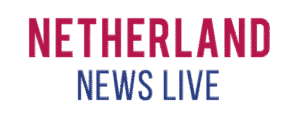The Dutch financial landscape is growing fast, and one of the most recent developments has been a rise in trading options.
Options have become popular because they allow for speculation on the price development of an asset without being exposed to directional risk, as you would be when you buy or sell that asset.
This article will go over all aspects of trading options in the Netherlands so that any trader can understand what’s going on.
Existing Options
The first thing to do is figure out how many types of options exist.
Put and Call Options
In short, there are two: Put and Call options (there are variations like European style vs American style).
A put option gives you the right to sell shares at a set price before a specific date; call options give you the freedom to buy shares.
For example, if an investor holds a put option and the cost of the stock falls below his break-even point, they can sell it to receive a certain amount of cash (called exercising the contract).
There are several marketplaces where you could trade options: exchanges like Euronext and Eurex, as well as alternative trading venues such as “market makers” and online brokers.
This article will focus on the first two because those have been traditionally considered ‘tradable’ options markets.
One exciting thing about options here is that they behave more like securities than futures. That means that all Dutch financial laws apply to them, which can be bad for traders because these rules restrict what’s possible in options trading.
The Dutch regulator is the AFM, which watches overall financial activity in this country (and will be mentioned throughout this article regarding essential rules).
When trading outside of the Netherlands, it gets more relaxed for some exchanges; that’s why many people choose to sell at international businesses like CBOE or CME because of fewer restrictions.
Leverage
The differences between an option and a futures contract are usually explained by comparing the leverage involved.
For example, if you hold a Dutch 100-strike call option on EUR/USD with an expiration date of January next year, your maximum potential gain would be roughly 2x compared to what you could have achieved with owning one lot of EUR/USD outright (buying or selling one standard lot at the spot and closing it today).
The reason is that you don’t buy or sell currencies outright, but through options, you gain the right to do so. So to achieve your maximum gain of 200 points (2.000 USD), the price of EUR/USD would need to reach 122 (roughly) (1/0.685 = 1.382; 1.382 * 2 = 3.764; 100 – 1 – 3 – 0 = 94).
Leverage is one of the most exciting aspects because it makes trading options more like gambling than investing: You can win a lot and lose a lot. The value and characteristics of an alternative depend on whether it’s being treated as a put or call option.
For example, a contract that has the right to buy something at 1 euro will be less sensitive to changes in price than one that has the right to sell it at 1 euro (because it’s more likely that buying/selling pressure will come into play).
In Conclusion
To wrap everything up here, we’ll describe how things work by using an example of a Dutch trader who goes long on EUR/USD as follows:
He expects the market to rise, so he decides to go long on EUR/USD with a January expiry – where he bought one contract for €10,000 with his margin account. This means that if the value of his position increases beyond €11,000, he could withdraw those funds from his account. The cost is €300(3%).
Now he has two options: He can settle (close) his position before the expiry date, which would mean that he sold back the contract for €11,300. Or if the value of EUR/USD went up to €12,000 by January, he could exercise his call option – meaning that it becomes a real deal with him buying one lot of EUR/USD at spot price and closing it today.
This justifies his initial €10,000 bet because now it’s worth €1,300 more than what he paid for! If only everyday trading were this easy. For more information, read more here.




